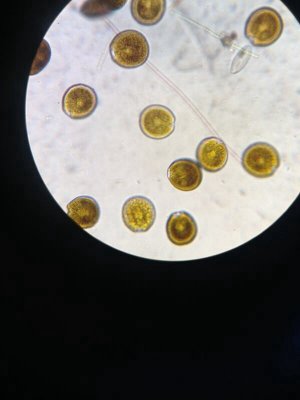Yeah, I've been fighting this thing for 6+ months. I'm not giving up... Anyway, I got Algae X online from Barrier Reef Aquariums, but it seems to be out of stock right now. Regardless, I've followed the instructions precisely and I don't see any improvement so far. I'm on dose number 7 and I plan to finish the treatment but my expectations by now are not that high. If this fails, I have no idea what else to try.
At some point I thought it might no be dinos, but got a cheap microscope and I was able to ID the nasty bug.
But I'm not giving out, I'm not going bare bottom, and I'm not trashing my tank. There has to be a way to beat this sucker. LOL - I was just reading a thread where someone claims to have beaten dinos using Ich-attack from Kordon. Go figure...
At some point I thought it might no be dinos, but got a cheap microscope and I was able to ID the nasty bug.
But I'm not giving out, I'm not going bare bottom, and I'm not trashing my tank. There has to be a way to beat this sucker. LOL - I was just reading a thread where someone claims to have beaten dinos using Ich-attack from Kordon. Go figure...


